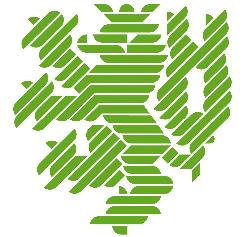
|
Bergische Universität Wuppertal
|

|
|

|
Bergische Universität Wuppertal
|

|
|
Numerical Treatment of PDEs on unbounded Domainsjoint work withX. Antoine, Université Henri Poincaré Nancy 1, FranceA. Arnold, Technische Universität Wien, AustriaC. Besse, Université des Sciences et Technologies de Lille, FranceTh. Koprucki, WIAS BerlinA. Schädle, Universität DüsseldorfF. Schmidt, Konrad-Zuse-Zentrum BerlinJ. Szeftel, Université 13, Paris, FranceC. Zheng, Tsinghua University, Beijing, China
|
When computing numerically the solution of a partial differential equation in an unbounded domain usually artificial boundaries are introduced to limit the computational domain. Special boundary conditions are derived at this artificial boundaries to approximate the exact whole-space solution. If the solution of the problem on the bounded domain is equal to the whole-space solution (restricted to the computational domain) these boundary conditions are called transparent boundary conditions (TBCs). Some Review articles about computation on unbounded domainscan be found here.
We are concerned with TBCs for general Schrödinger-type pseudo-differential equations arising from `parabolic' equation (PE) models which have been widely used for one-way wave propagation problems in various application areas, e.g. (underwater) acoustics, seismology, optics and plasma physics. As a special case the Schrödinger equation of quantum mechanics is included.
Existing discretizations of these TBCs induce numerical reflections at this artificial boundary and also may destroy the stability of the used finite difference method. These problems do not occur when using a so-called discrete TBC which is derived from the fully discretized whole-space problem. This discrete TBC is reflection-free and conserves the stability properties of the whole-space scheme. We point out that the superiority of discrete TBCs over other discretizations of TBCs is not restricted to the presented special types of partial differential equations or to our particular interior discretization scheme. Our strategies have already been adapted by a Princeton workgroup to systems of wave equations for materials with cracks was also applied to the Numerov scheme for the one-dimensional Schrödinger equation and to (underwater) acoustics.
Another problem is the high numerical effort. Since the discrete TBC includes a convolution with respect to time with a weakly decaying kernel, its numerical evaluation becomes very costly for long-time simulations. As a remedy we construct new approximative TBCs involving exponential sums as an approximation to the convolution kernel. This special approximation enables us to use a fast evaluation of the convolution type boundary condition. We also prove stability criteria of the resulting initial boundary value problem and present an error analysis of the resulting numerical scheme. Numerical examples show the efficiency of the proposed method on several examples.
As well the approach for deriving discrete TBC was extended by Zisowsky to parabolic systems and systems of Schrödinger equations. Especially for this enormous costly boundary conditions the above approximation ansatz is very profitable.
Furthermore, the time-dependent Schrödinger-Poisson system in radial coordinates was investigated numerically. For the unitary and unconditional stable Crank-Nicolson scheme discrete TBCs were incorporated into an existing Fortran code to improve the long-time simulation of the whole space evolution in the spherically symmetric case. Special attention was paid to the study of the asymptotic behaviour in time for the solutions in the attractive case with positive energy. Several test examples were done to numerically check the validity of a dispersion equation relating density and linear moment dispersion.
We want to extend the above described approach to Schrödinger-type equations. Thereby we want to derive discrete TBCs for new numerical methods (e.g. a mass and energy conserving predictor-corrector scheme), space-dependent potentials and in the case when the support of the initial data is not completely contained in the computational domain. The results shall be compared with the alternative approaches (e.g. the Pole condition) of F. Schmidt and Antoine and Besse . As concrete application in the nanotechnology we collaborate with A. Arnold and Th. Koprucki and compute numerically solutions to the ``double-barrier stepped-quantum-well'' (tunnel structure). Here we consider special systems of Schrödinger equations (Kohn-Luttinger model of the valence band) and use the discrete TBC for systems of Schrödinger equations from Zisowsky. ( details). As a second application and to demonstrate the effectiveness of the approximative discrete TBC we simulate (with A. Arnold and O. Vanbésien) the transient behaviour of quantum wave guides (``multi-channel quantum waveguides'') in 2D.
Closely connected with the derivation of TBCs for different equation is the analysis of initial boundary value problems (IBVPs) that arise when coupling different models. One can find applications for (discrete) wave equation models e.g. in underwater acoustics. There one wants to couple a fluid model for the water with an elastic model for the sea bottom. Let us remark that we already analyzed the coupling to different `parabolic' equations in the sea bottom. We will analyze the well-posedness and stability (discrete) Initial boundary value problems arising from a Quantum-Drift-Diffusion equation. Furthermore we will investigate the application of TBCs (Coupling to the Schrödinger equation).
As a third focus we want to develop discrete TBCs for hyperbolic systems. First we carry over the existing approach from the literature to the two-dimensional wave equation and analyze the resulting IBVP in regard to its well-posedness and stability. Afterwards, in a second step, we will apply the ansatz of Zisowsky to hyperbolic systems. In this connection we want to study the (discrete) coupling of different hyperbolic systems. The numerical results in the application to the Euler equations of gas dynamics shall be compared to that of Rowley and Colonius. As a concrete application we use the discrete TBCs in the simulation of quantum devices with classical regions that can be described by hydrodynamical models. We will consider the classical Baccarani-Wordeman-Model (as it is used in industrial codes) and the improved hydrodynamic model for semiconductors.
Finally, to illustrate the broad range of applicability of our approach we derive efficient discrete artificial boundary conditions for the Black-Scholes equation of American options.
Our approach was implemented by C.A. Moyer in the QMTools software package for quantum mechanical applications.
|